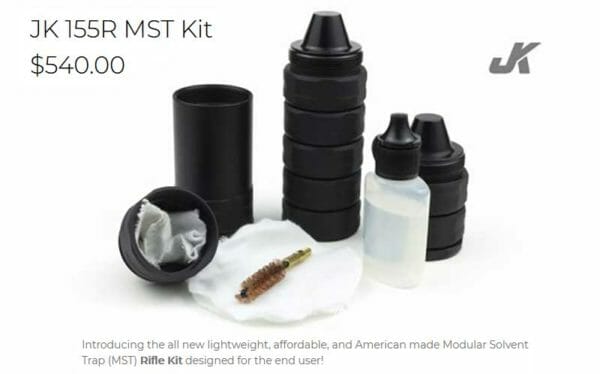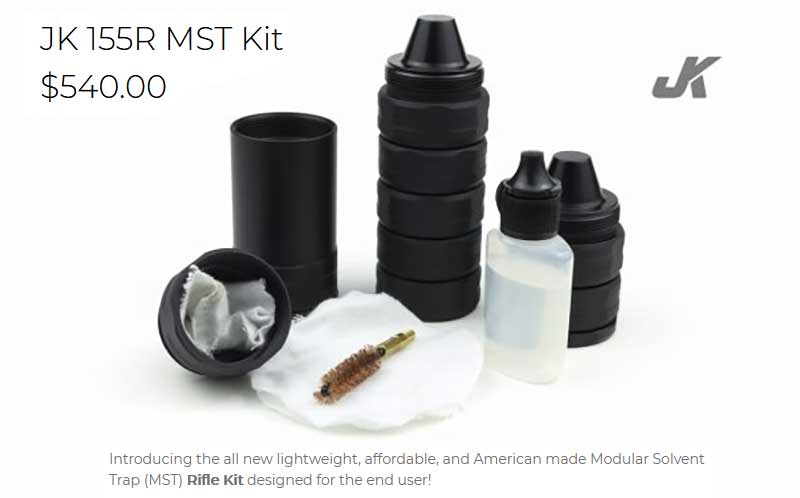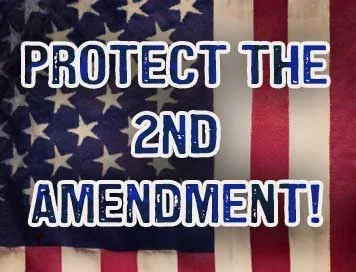Cautionary Note: All silencers require a $200 tax stamp from the BATFE in the USA. I caution U.S. readers not to produce one unless you pay the tax and acquire the proper paperwork first. Any time you are breaking new ground in the world of firearms development, especially when it involves new technologies, we caution you to get the best legal advice in navigating and lawfully complying with the multiple and confusing world of local, state, and federal gun laws. The only stated purpose of this article is to report on new developments and the adaption of new technologies for personal gunsmithing. Note to government agencies AmmoLand News follows all rules to the letter of the law. No silencers were created in the production of this article.

U.S.A. –-(AmmoLand.com)- In the first part of this series, I wrote about the history of silencer criminalization, about how a simple safety device, relatively easy to make at home, was made into contraband. Contraband where mere possession can result in some of the heaviest criminal penalties in the federal sentencing guidelines.
Silencers are easier to make today, than at any previous time in history.
The process to pay the draconian tax required to make a silencer is easier today, than at any time in our history.
The potential penalties for possession of a silencer, without the payment of the tax, are draconian. Federal guidelines call for a minimum sentence of 27 months in prison, without parole. The potential fine is $10,000. The maximum sentence, if the silencer possession coincided with possession of drugs with intent to distribute, is 30 years in prison without parole, and a $250,000 fine.
The time required to build one consists of the wait time for the Form 1 processing and a couple of days or hours to build the silencer.
The wait time to follow the bureaucratic procedures to purchase a silencer (not to build one) has been stretching out to several months.
Time to get an approval for a Form 1, over the Internet, is reported to be about 2-3 weeks. The wait time has likely increased in the last two months as the record breaking surge in firearms sales has continued.
These facts considered together, have led to a boom (or should we say a “whisper”?) in legal homemade silencers.
As of August 2020, there are almost certainly over two million legal silencers in the United States. There were over 1.75 million as of May of 2019, more than a year ago. From April 2017 to May, 2019, the number of legal silencers increased by 390,000. The increase is likely higher than 200,000 a year in 2020, as shown by the record breaking firearm sales.
As shown by BATFE records, about 10 – 20 percent of the legal silencer increase is from people making their own silencers, using an ATF Form 1 to meet the regulatory requirements.
The sequence to legally make your own silencer is this:
- Send in the completed form 1, fingerprint cards, and payment of the $200 tax to the BATFE. Pay attention to details. The link shows how to do it.
- Wait for approval of the Form 1, and the Tax Stamp form. Do NOT begin the build until after the next step.
- When you have been approved, make the silencer.
There is no time limit for completing the silencer build and you do not need to send in a diagram.
The Form 1 will require the overall length of the silencer you intend to build. It will require the caliber. That may be the hole in the end of the silencer. The hole size does not appear to be critical, according to discussions on the Internet forums. The Form 1 will require the proposed model number and serial number. It will require the name and address of the proposed manufacturer. The Form 1 does not require any photographs of a silencer, but it does require a photograph of the manufacturer (passport type photo).
There are several ways to make your own silencer.
1. Machine everything from scratch. This is not difficult if you have a lathe and experience in using it.
2. Purchase a solvent trap or military pill container or fuel filter which has a number of features in their existing, legal form which are useful in the production of a silencer. Then, complete the machining, which consists primarily of drilling holes. Assemble the components into a legal silencer.
These items, which amount to “80% silencer kits”, are available from numerous sources in and out of the United States, and can be purchased over the Internet. Some of these sell for as little as $10-$20.
3. Purchase separate components, which are mostly compatible, do little or no machining, and assemble them into a simple silencer. One of the most common methods for this is to use flashlight tubes or PVC components.
4. Use a 3D printer to print an entire silencer as one unit, with a small amount of clean-up of the finished product. This has been done at least a few times, as a proof of principle for a .22 rimfire silencer. Alternately, a 3D printer could print a few parts which could be assembled into a silencer.
The people experimenting with 3D printed silencers say they completed all the necessary paperwork. It is easy to do if you are a licensed manufacturer (not the same as a Form 1). The problems with 3D printed and PVC silencers is while they may last for a few hundred rounds, they are not as durable a metal silencer. If you are going to pay $200 to exercise your Second Amendment rights, they are a moderately expensive option.
The most popular method is what amounts to an “80% silencer kit” which uses solvent traps, fuel filters, or pill containers that already have much of the machining compatible with a silencer done, as an intrinsic part of their shape.
Advantages:
- They are easy to finish.
- They work well.
- They are durable and effective.
Disadvantages:
- The price can be high – as much as $500 for a top of the line solvent trap.
- There is no guarantee because you are the manufacturer.
Sellers of the solvent kits, fuel filters, and pill containers come and go. Those selling on Ebay often list a limited number of items, sell those, change their name, and sell more as a different seller, to limit their exposure.
Purchasing such items from overseas exposes the purchaser to potential charges of illegal importation of a silencer.
This seldom happens, but there have been a couple of cases. This one, in New Mexico, is going through the legal process as this article is written. From stripes.com:
U.S. Customs and Border Protection intercepted a package addressed to Justice at the international postal station at John F. Kennedy airport in New York City. Agents opened the package because the Chinese company that sent it was known to ship silencers into the U.S. illegally.
Agents found information that Justice had placed orders with Chinese vendors of shipping firearm-related devices like the silencer in the past.
The specific silencer agents found was sold under the name of “Inline Filter” with the intent to disguise it as an automotive part.
One problem is the definition of what is a silencer.
Some of the fuel filter kits, especially those with a monocore, might be considered a complete silencer, or a dedicated silencer part, because they have a hole through their center. Enforcement of this is very spotty.
Many of the kits are sold in the United States, through Amazon or Sears or Walmart. The suppliers come and go, so a search is necessary to determine the latest terms and deals. Kits sold in the U.S. are usually more expensive. The smaller, simpler kits are generally for .22 rimfire.
There are intermediate kits for general pistol/subsonic use.
There are more sophisticated, more expensive kits for supersonic high powered centerfire rifles.
There are hints in the advertisement for a solvent trap as to what calibers would be suitable for a suppressor made from that kit. Sometimes the solvent trap makers will be very specific. If you study finished suppressors on the market, you will quickly be able to determine what “80% suppressor kits” are appropriate for what calibers. A suppressor which is appropriate for a .22 rimfire may well be destroyed by a .223 supersonic round.
About Dean Weingarten:
Dean Weingarten has been a peace officer, a military officer, was on the University of Wisconsin Pistol Team for four years, and was first certified to teach firearms safety in 1973. He taught the Arizona concealed carry course for fifteen years until the goal of Constitutional Carry was attained. He has degrees in meteorology and mining engineering, and retired from the Department of Defense after a 30 year career in Army Research, Development, Testing, and Evaluation.








Good stuff thx
WHOA, the initial “Cautionary Note” is a MAJOR CYA by the author. Obviously the BATFE has him spooked!!!
Well, $540 is a ridiculous price, may as well buy a commercial suppressor for that. I did 2 suppressors on a Form 1, a 5.56 that was just under $100 in parts and a 30 Caliber which cost $197.50 (less shipping) in parts, I kept the receipts that time.
One thing to note about the various “fuel filter” and “solvent trap” kits constantly advertised online is that almost all of them are aluminum which is not likely to be durable for anything above rimfire. Be especially cautious of the ones advertised as “titanium” in that these are generally just aluminum with a titanium coating (which is often just black paint) on the outside.
How do I follow your link if I refuse to use twitter? Nor do I patronize facebook, google, amazon, or any other libtard organization. Only when hard-pressed do I go on youtube – but I do not have a Youtube account. And I don’t [knowingly] associate with ANY Democrats.
I’m lost…help me, please. 🙂
Meanwhile, over at “The Captain’s Journal” … (starting at about 7:15 for 3mns)
https://www.captainsjournal.com/2020/07/31/im-under-investigation-for-buying-diesel-parts/#comments
And, a few of the comments there allude to everything the “presenter” did wrong – reference DON’T TALK TO POLICE – Professor James Duane youtube video (I’d provide a link but to avoid moderation …)